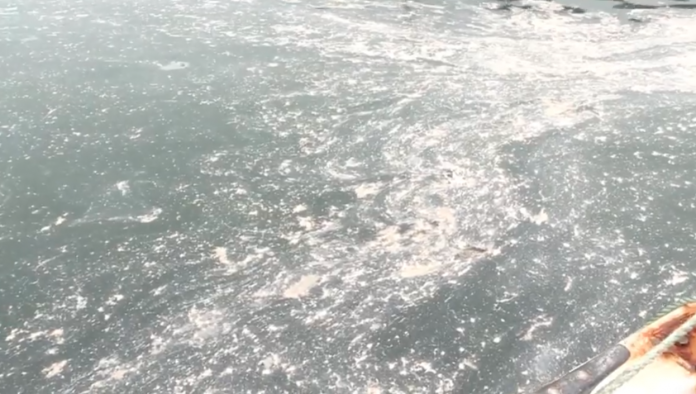Flushing out dead salmon into the water could affect the sea’s biodiversity, a university professor has told Salmon Business.
Alejandro Buschmann, a coastal ecology expert at Los Lagos University in Chile, says the move isn’t a natural biomass and a load of large dead fish risks reducing oxygen levels in the site, affecting the local biodiversity.
It was last week reported that a huge clean-up operation had begun in Fortune Bay, Canada, where Mowi, who owns Northern Harvest Sea Farms, is emptying out its salmon pen after a mass die-off.
The mortality was reported in September but official numbers on the deaths have yet to be confirmed.
Mowi says the clean-up operation does not involve dead or rotten fish. There is no suggestion that this is not the case.
Video footage from the scene shows pink liquid flowing from two vessels. But it’s since been confirmed that the diving work has been halted by the Newfoundland and Labrador Government.
Speaking to Salmon Business from his university in Puerto Montt on how hazardous it can be to flush out dead fish, Mr Buschmann said: “This is one explanation. After Chilean regulations all the mass mortality must be removed from the sea. And in Chilean conditions, mortality is removed every day by diving or some sort of automatic system. When you have mass mortalities for any reason, then your capacity to deploy that biomass is restricted. After mass mortality, you need to wait. The fish will start to discompose. So, you will have discomposing fluids moving from your cages by water current into the sea.”

“The other explanation is that you have some allowance to drop the fish into the nearby environment, which I doubt. You would need to explore this. If the regulations can allow that or not. If that is allowed, you have the biomass and organic matter entering into the environment and it will rotten the environment. Degradation by bacteria will start, and you will have fluids going into the water column.”
He added: “But the fish, depending on the sea at that time, will begin to degradate quite fast. Bacteria will take them down and you will have organic fluids coming out of your system. So, the only thing you need to have is for a quick disposal of your dead biomass into an official dumping place outside the sea. That’s the normal protocol for managing mass mortality.”
“I’m not considering medication and type of things, but the entrance of organic matter in large amounts means that all that will discompose by bacteria and this large biomass will reduce oxygen levels, the bacteria will consume all the oxygen so you will have reduced oxygen waters, then biodiversity will decline and you will have a strong impact.”
On Thursday, Jason Card, the Canadian spokesman for Mowi, explained that a mass mortality plan was in place and it has been using local services such as the “Eastern Pride” fishing vessel, which has been hired for cleanup duties. This, said Card, is a government approved standard operating procedure.
He told Salmon Business: “What we are doing has no environmental impact or damage. Vessels have been taking fish out of the pens – and the mortalities are drawn out of the hull but naturally the water is being sent over the side of the boat and it has a natural salmon pigmentation.”
He added: “But there’s no effluent pollution or issues with that. We couldn’t use the operational standard procedure if it had an impact. Mortalities are not being pumped into the sea but pumped into vessels then sent to a plant.” When asked about the risk of algae bloom, he said: “I have no concern about that – there’s no involvement in what we have experienced here.”

